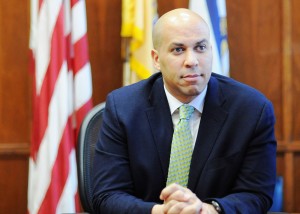

Long before this month’s damning report from the Joint Center for Political and Economic Studies that revealed a stunning lack of diversity among top staff in the U.S. Senate, Nevada Democratic Senator Harry Reid had formed a means to assist offices with identifying and hiring a more diverse workforce.
Reid started the Democratic Diversity Initiative that, in addition to assisting with a more diverse workforce, would help those who want to work on Capitol Hill with understanding and navigating the job search process.
“A Senate workforce that reflects the diversity of our nation and is demographically representational of the constituents we serve,” Reid said of the initiative. “Our concept of diversity and inclusion embraces differences in race, ethnicity, religion, disability and sexual orientation as well as recognizes the military service of our veterans.”
On December 8, the D.C.-based Joint Center – an African-American think tank – revealed that just 7 percent of the top staffers in the U.S. Senate are people of color, far below minorities’ representation in the population of the United States.
The report found only 24 staffers of color out of the 336 top Senate staffers working in Washington. Further, minorities make up over 36 percent of the U.S. population, and over 28 percent of the citizen voting-age population, according to the study.
Minorities are also under-represented among U.S. senators.
There are two African-American senators, three Hispanics, and one Asian-American.
“I salute the Joint Center for Political and Economic Studies for their long standing commitment to ensure the voices of all Americans especially the voices that are too often not represented in the legislative debate,” Reid said. “The recent study by the Joint Center illustrating the lack of staff diversity at the most senior levels of Senate offices serves as an important reminder of how much work we still need to do, but, I remain as committed as ever to the concept of staff diversity and stand behind the work of the Senate Democratic Diversity Initiative and its efforts to help ensure that our offices are more reflective of the constituents we serve.”
Luke Bolar, a spokesman for Louisiana Republican Sen. David Vitter, said the senator’s staff includes three minorities among its senior members.
Vitter’s Deputy Chief of Staff and Staff Director for the Senate Small Business Committee is Native American; his Communication’s Director on the Senate Small Business Committee and his Capitol Region Director are Asian-American.
Vitter also employs five African-Americans which represent 12 percent of his entire staff, Bolar said.
Bryan Watt, a press secretary for Washington State Democratic Sen. Maria Cantwell noted that the Joint Center’s report applauded Cantwell for having at least one individual of color in a top staff position.
“Since the report came out, our senior staff now includes two people of color,” Watt said.
Also, a spokesman for California Democratic Sen. Barbara Boxer said their office works with Reid’s Democratic Diversity Initiative, maintaining and sharing a database of candidates for open senate staff positions at all levels while holding professional development meetings, informational interviews, public forums and resume and cover letter tutorials.
Boxer’s office also helps with recruitment and placement of interns and job candidates while also promoting mentoring, networking, partnerships with outside organizations and other initiatives for individuals of color.
James R. Jones, who conducted the Joint Center study, told the Associated Press that researchers looked at top positions in senators’ Washington offices, including chiefs of staff, legislative directors, and communications directors in personnel offices, as well as staff directors assigned to committees.
They were only able to find 12 Asian-American, seven Latino, three African-American and two Native-American staffers.
The top Senate staffers wield important influence with their bosses, and help shape legislation and policies that affect everyone, Jones said.
“You need to have people from all walks of life in the room making decisions,” said Jones, a Ph.D. candidate in the sociology department at Columbia University.
Working for the Senate also opens doors to other jobs in government, and by not getting those first congressional jobs, minorities find it more difficult to move up a government ladder that looks favorably upon Capitol Hill experience, he said.
Minorities make up larger numbers in the Democratic Party than they do in the GOP, but the study noted that the number of minority staffers was not that different between the two parties.
It found that 8.1 percent of the Democrats’ top Senate staffers were minorities and 6.7 percent of the top Republican staffers were minorities.
The report noted that people of color make up about 37 percent of those who identify as Democrats, and 9 percent of those who identify as Republicans.
“Increasing the presence of people of color in senior staff positions in the Senate will amplify the voices and perspectives of communities of color and in the process enhance the quality of legislative deliberations,” said Spencer Overton, president of the Joint Center.
The think tank is calling on senators to increase diversity by interviewing more minorities for top positions, hiring more minority interns and starting fellowships for minority staffers.
It also called on the Senate to be more transparent in its staffing because — unlike many government agencies — Congress is not required to monitor the race and ethnicity of its workforce.
Researchers said they combed online profiles, consulted with Senate organizations and called Senate offices to come up with their numbers.
However, not all U.S. senators were eager to put stock into the Joint Center’s finding.
“Instead of this narrow measurement, a real picture of diversity would include a senator’s staff in the state and their committee staff,” said John LaBombard, a spokesman for Missouri Sen. Claire McCaskill.
“When the broader picture is taken, it demonstrates Sen. McCaskill’s strong commitment to diversity with almost one-quarter of her staff being people of color including several members of her leadership team, like her committee staff director who is the only African-American committee staff director in the Senate,” LaBombard said, adding that a “strong majority” of McCaskill’s senior staff is made up of women, and several LGBT staff members, including leadership staff.



